What's New
Displaying results 4471 - 4480 of 4911

Resource | Presentations,
This is a presentation on Critical Issues in the Success of National ARV Treatment Programs in Asia. The presentation was made by Director Kevin Robert Frost of TREAT Asia.
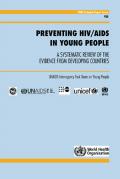
Resource | Publications,
The challenges posed by HIV have progressed inexorably during the past decade, especially for young people in developing countries. At the same time, many lessons have been learnt about developing and implementing programmes for young people’s health and development, including programmes to prevent the spread of HIV. In 2004, the UNAIDS Inter-Agency Task Team on Young People decided that it was time to review the progress that had been made and to look again at the evidence for the effectiveness of interventions, focusing explicitly on interventions to prevent the spread of HIV among young people in developing countries.
This report is an attempt to rise to the challenge by providing systematic reviews of the evidence for policies and programmes to decrease HIV prevalence among young people, as a contribution towards achieving universal access to prevention, treatment and care (7) and attaining the Millennium Development Goal on AIDS (8).

Resource | Presentations,
Main objective
• Retrospective cohort analysis of patients who started ARV 24 + 2 months ago and followed without viral load monitoring
Secondary objectives
• Description of success/failure clinico-immunological criteria at 24 months and at 6, 12 and 18 months
• Identification of the reasons for virological failure at 24 months
• Description of resistance mutations to ARV observed at 24 months
• Analysis of the observance of the patients still on ARV at 24 months
• Evaluation of ARV side-effects during the 24 months of treatment
• Pharmacological analysis of ARV at 24 months

Resource | Publications,
Stigma-AIDS is a time-limited, global forum on HIV- and AIDS- related stigma and discrimination. The forum is managed by Health and Development Networks (HDN), working together with the International Federation of the Red Cross and Red Crescent Societies (IFRC), the Global Network of People Living with HIV/AIDS (GNP+) and the Joint United Nations Programme on HIV/AIDS (UNAIDS) on the IFRC global campaign against HIV/AIDS-related stigma and discrimination: ‘The Truth About AIDS. Pass it on...’, launched in 2002.
The objective of the forum is to provide a place where knowledge, experience and practical solutions about stigma and HIV can be discussed and shared among people from all regions.
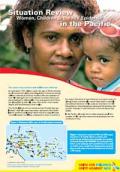
Resource | Publications,
An estimated 1,700 children under the age of 15 are infected by HIV around the globe everyday. Many of these are young children, infected at birth by mothers who are unaware of their HIV status. A host of social and economic factors are exacerbating the vulnerability of young women and if they are already living with HIV, they often suffer more sever stigma and discrimination than males.
The Pacific Islands are not being spared. Though data are limited, 1,028 HIV cases have been reported in the Pacific Island countries (excluding Papua New Guinea). Although the total number is still low compared to other countries in the region, the trend in new infections is a major cause for alarm.
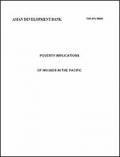
Resource | Publications,
Poverty has decreased dramatically throughout most of the Asia and Pacific region. From 1990 to 2000 the number of people living in poverty across the region fell by 165 million (ADB, 2004a). However, economic growth in India and the People’s Republic of China has driven much of the reduction in headline poverty figures. Other parts of the region, most notably the Pacific, have not witnessed a similar spectacular fall in poverty. Isolation, erosion of human capital, youth unemployment, inequitable growth, and political instability are challenges that Pacific states need to overcome if they are to reduce poverty and achieve development goals shared internationally.
The overall objectives of this study are to quantify the poverty impacts of an escalating HIV/AIDS crisis in the Pacific, and to raise awareness and increase understanding among key decision makers.
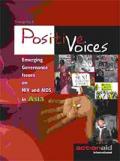
Resource | Publications,
This initiative is based on informing and informed understanding about causes and issues of HIV and AIDS from the perspective of governance and power relationship, unequal and unjust power equations. HIV and AIDS is also a political issue, warranting a political response from governments and the corporate sector. The role of civil society and non-government organisations is crucial in making change happen on ground. ActionAid is committed to galvanise synergy and facilitate co-ordinated action.
The issue of HIV and AIDS has socio-political, gender and cultural implications. There is a need to initiate organised action and concentrate public effort to fight the stigma and discrimination against people living with HIV. Changing this situation requires both societal action and public advocacy.
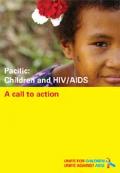
Resource | Publications,
HIV and AIDS have left virtually no country, rich or poor, untouched. The Pacific island countries are no exception. Fed by rapid economic and social changes, conditions have become increasingly conducive to the spread of HIV. Leaders are beginning to match words with action, and progress on prevention, testing and counselling has been made, but much more needs to be done. Children are the missing face of AIDS, and failure to take account of their critical needs for prevention, protection, treatment and care will acutely undermine the region's chance of achieving other development objectives, including the Millennium Development Goals.
HIV and AIDS are redefining the very meaning of childhood, depriving children and young people of the care, love and protection of their parents, of education and options for the future, and of protection against exploitation and abuse. All too often, children affected by HIV and AIDS are stigmatized and discriminated against or slip through social welfare systems, and those children who are already infected are missing out on vital treatment and medical care.

Resource | Publications,
I was born male and identify as one. Until recently I hadn't asked myself why I had turned out this way. Yet many transpeople I know have long asked this question of themselves. What's more, there is a small army of researchers trying to uncover answers to the same question. Relatively few seem interested in going up to a trans person and simply asking him or her 'Why do you think you turned out this way?
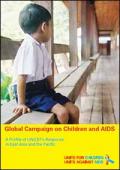
Resource | Publications,
On 25 October 2005, the Joint UN Programme on HIV/AIDS (UNAIDS), UNICEF and partners across the globe launched the most ambitious campaign to date to focus the world’s attention on the impact HIV and AIDS are having on children and young people today. Under the banner “Unite for Children, Unite against AIDS”, the Global Campaign on Children and AIDS sought to raise the alarm for the millions of children already living with or affected by HIV and press countries into taking action for them and future generations. For too long, children have been absent from the global HIV prevention, AIDS treatment and care agendas, and the campaign seeks to relegate these grievous omissions to the past.
This campaign could not have come at a more opportune time in East Asia and the Pacific. While HIV prevalence in the region remains relatively low, the virus poses a serious threat. East Asia’s massive population coupled with rapidly changing social and economic dynamics could escalate epidemics, and in turn, jeopardize the tremendous development gains that have greatly benefited millions of children in the region. The threat is of a different nature in the Pacific, where HIV could devastate sparse populations and undermine whole cultures and societies.





